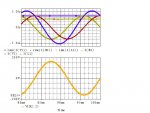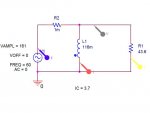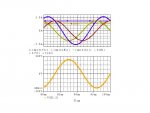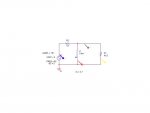mbrooke
Batteries Included
- Location
- United States
- Occupation
- Technician
Not sure what you mean, your power accounting is fine, your calculation of 2.75 amps as the real and reactive current is not.
But isn't PF; watts/VA=PF?
You can say that 2.75 amps is the current that would be drawn if the real power was still 330W and the power factor was 1.0. But if you add a current waveform that has a magnitude of 2.75 amps to a current waveform of the same magnitude that is 90 degrees out of phase, the amplitude of the resulting waveform is not 5.5 amps.
Cheers, Wayne
So if I had a 2.75amp light bulb in parallel with a 2.75amp reactor, I would have...? (not saying you are wrong here however)





